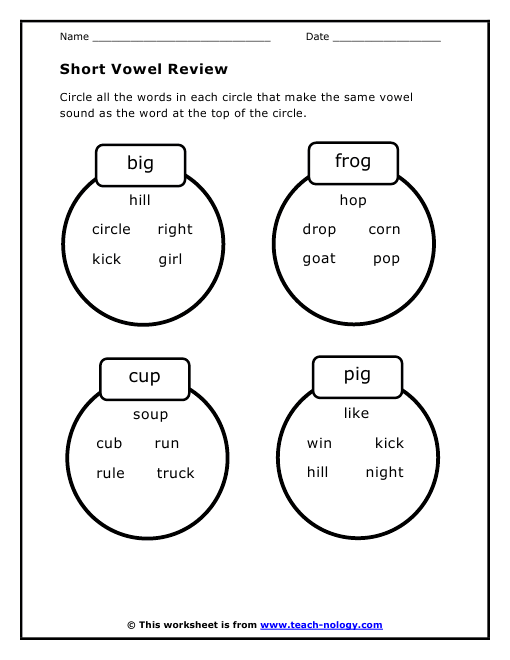

- Teaching short vowel sounds to older students plus#
- Teaching short vowel sounds to older students download#
- Teaching short vowel sounds to older students free#
When they’re finished, they can “read down” the column of pictures, again naming each picture. Give students a set of picture cards for 2-3 sounds total (i.e., some pictures for a, i, and u). This activity is simple but helpful for students who are having trouble differentiating between the vowel sounds.
Teaching short vowel sounds to older students free#
If you’re out of sand or want to change things up…try the free Sand Draw app!Īlthough it’s not quite the same as real sand, kids still get the sensory experience of tracing with their finger while saying the sound aloud. You’ll still want students to say the letter name and sound while they trace. Option 2: Use the same procedures for activity #1, where you say a short vowel word and students identify and write the vowel sound they hear. While they are writing the letter, they say the letter name and sound (“U” says /u/).

Students then write the correct letter in sand.

There are a few different things you can do with sand: I like to use colored sand, like this (that’s an Amazon affiliate link), but regular sand works just fine too. Just put sand on a paper plate, in an aluminum pie tin, or on a small tray. Having kids trace a vowel in sand while saying the sound is an easy, engaging multisensory activity!
Teaching short vowel sounds to older students download#
You can download the templates HERE! Activity #2: Sand Writing It takes a little time to make the puppets, but once they’re done, you can use them over and over and over again! Students say: “Fish.” Students hold up the “i” puppet. Or, even better, have them say the letter name and sound: “A says /a/.” In addition to holding up the puppet, students should identify the vowel. Students have to listen, repeat the word, identify the correct short vowel, and hold up the corresponding puppet. In this activity, you say a word with a short vowel sound aloud. Activity #1: Short Vowel Craft Stick “Puppets”
Teaching short vowel sounds to older students plus#
Plus I’ve got 4 freebies for you! 🙂 Make sure to read all the way through the post so you don’t miss any of these freebies. In this post, I’ll share 5 short vowel activities that are fun, low prep, and only take a few minutes to implement. Once they learn long vowel sounds, things can get confusing, and we need to come back and review the short vowel sounds too! They need practice when they’re first learning the sounds, of course, but ALSO later on. In the southern United States, where I live, sometimes the e and i sound exactly the same!!Īccent or no accent, I find that my students need lots of practice differentiating between the short vowel sounds. The short vowel sounds can be so tricky, especially for students who have certain accents. Do your students confuse their short vowel sounds? Maybe they substitute e for a? Or i for e? Or just need more practice in general?!


 0 kommentar(er)
0 kommentar(er)
